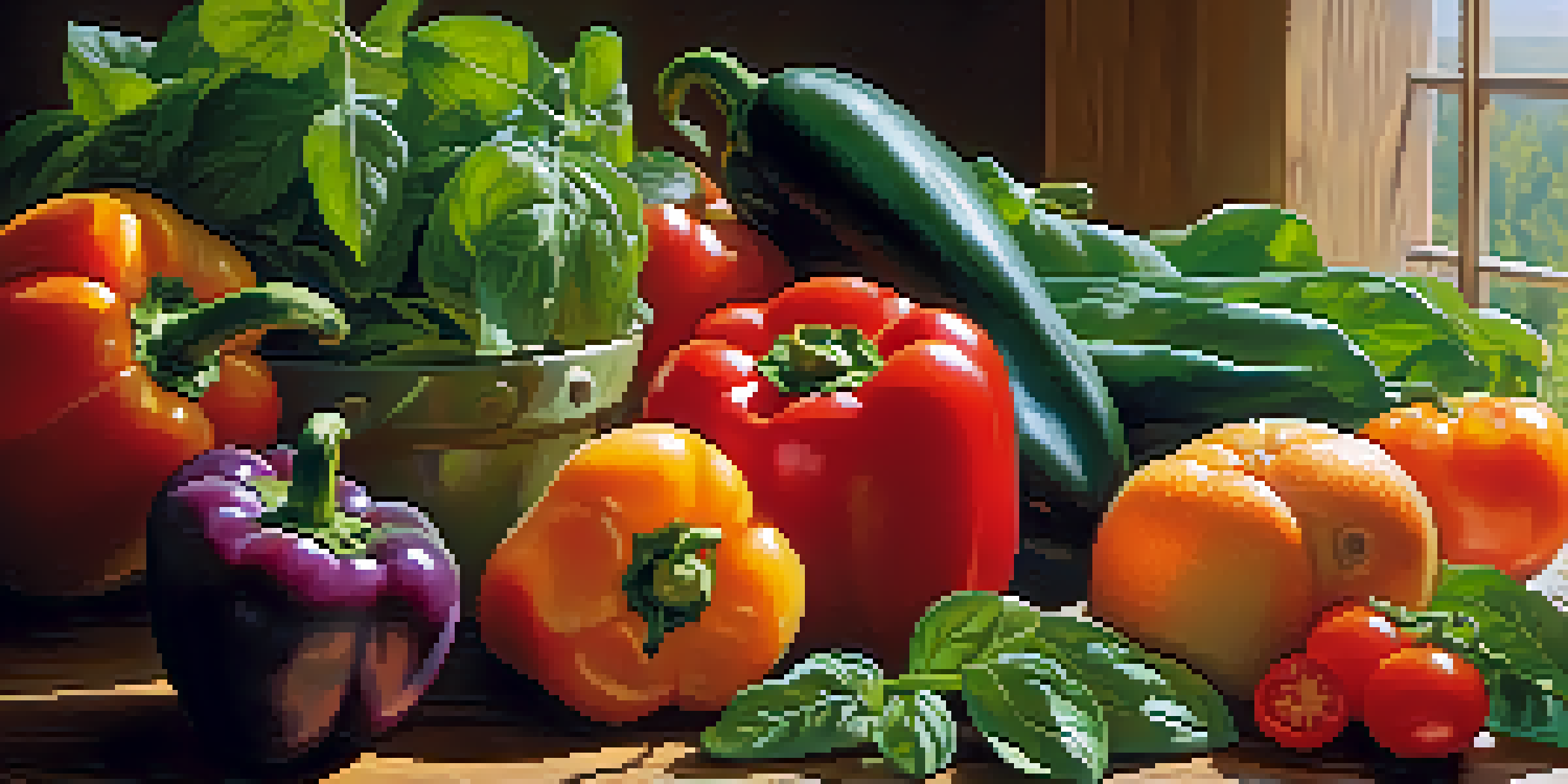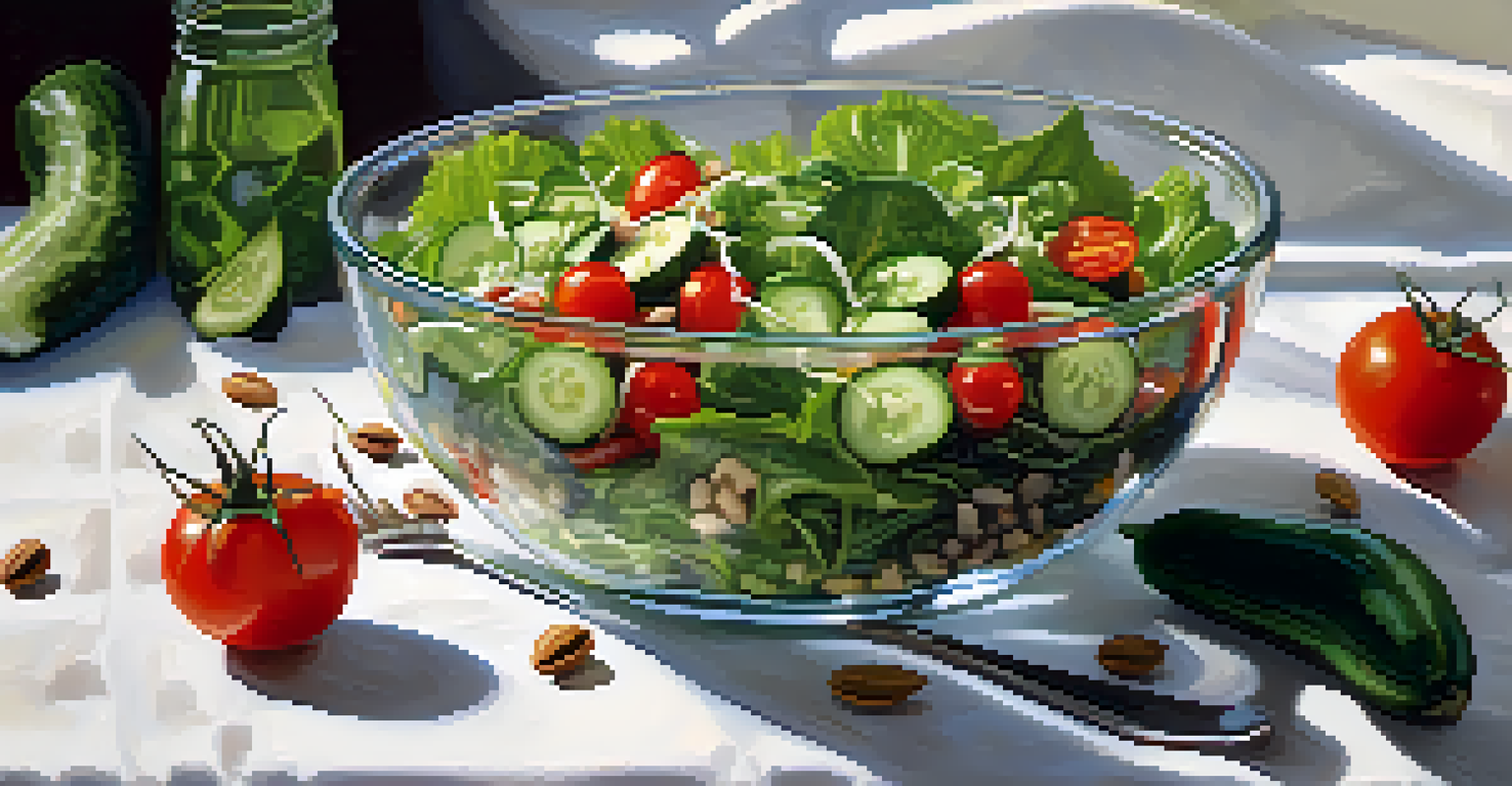The Science of Cooking: Raw Foods and Nutrient Changes Explained

What Are Raw Foods and Their Benefits?
Raw foods refer to uncooked, unprocessed, and often organic foods that retain their natural state. These can include fruits, vegetables, nuts, seeds, and even some dairy products. The primary allure of raw foods lies in their nutrient density, which may be diminished through cooking methods.
Let food be thy medicine and medicine be thy food.
Eating raw can provide a host of benefits, from increased energy to improved digestion. Many raw food enthusiasts claim that these foods can lead to better overall health, as they are rich in enzymes, vitamins, and minerals. For instance, raw spinach contains more vitamin C than cooked spinach, which can lose some of its nutrient value when heated.
However, it's essential to approach raw food diets with balance. While they are rich in certain nutrients, some vitamins and minerals are more accessible when foods are cooked. Understanding the pros and cons of raw foods is crucial for making informed dietary choices.
Cooking Methods and Their Effects on Nutrients
Cooking methods can significantly alter the nutritional value of foods. Techniques such as boiling, steaming, or frying can lead to nutrient loss, especially water-soluble vitamins like vitamin C and some B vitamins. For example, boiling vegetables can cause them to lose up to 50% of their vitamin C content, which is vital for immune health.

On the flip side, certain cooking methods enhance nutrient absorption. For instance, cooking tomatoes increases the availability of lycopene, an antioxidant linked to reduced risk of chronic diseases. This highlights the complexity of cooking, as it can both deplete and enrich the nutrient profile of foods.
Raw Foods Boost Nutrient Density
Raw foods are nutrient-dense options that provide essential vitamins and enzymes which can enhance overall health.
Understanding these effects can help you choose the best cooking methods for maximizing nutrient retention. For instance, steaming vegetables rather than boiling them can preserve more nutrients while still making them palatable and easier to digest.
The Role of Enzymes in Raw Foods
Enzymes play a crucial role in the nutritional benefits of raw foods. These complex proteins aid in the digestion and absorption of nutrients. When foods are heated above a certain temperature, usually around 118°F (48°C), these enzymes can become inactive, which may affect how well your body breaks down food.
You are what you eat, so don't be fast, cheap, easy, or fake.
For example, raw fruits and vegetables contain enzymes that help digest carbohydrates and proteins, making it easier for your body to absorb nutrients. A raw food diet can, therefore, facilitate better digestive health and may even contribute to weight management.
However, it's important to note that while raw foods are rich in enzymes, some people might find them harder to digest compared to cooked foods. This is especially true for those with sensitive stomachs or specific digestive disorders, highlighting the need for a personalized approach to dietary choices.
Nutrient Density: Raw vs. Cooked
Nutrient density refers to the amount of essential nutrients a food contains relative to its calorie content. Raw foods often boast high nutrient density, making them an attractive option for those looking to maximize their health benefits. For instance, raw carrots are rich in beta-carotene, which is essential for vision and immune function.
Conversely, cooking can lead to a decrease in certain nutrients but an increase in others. For example, while cooking can reduce vitamin C levels, it can enhance the availability of carotenoids, another group of antioxidants. This dual effect challenges the notion that raw foods are always superior nutritionally.
Cooking Alters Nutrient Availability
Different cooking methods can either deplete or enhance nutrient profiles, emphasizing the importance of how foods are prepared.
Ultimately, achieving a balanced diet may require a combination of both raw and cooked foods. By incorporating a variety of preparation methods, you can enjoy the unique benefits of each food group while ensuring a comprehensive intake of vital nutrients.
The Impact of Light and Air on Nutrients
Light and air exposure can also influence the nutrient content of foods. Many vitamins, particularly vitamins A, C, and E, are sensitive to light and can degrade over time. For instance, storing raw leafy greens in a transparent container may lead to nutrient loss due to light exposure.
Similarly, oxygen can cause oxidation, which affects the quality and nutritional value of foods. Cutting fruits and vegetables exposes them to air, which can lead to nutrient depletion. To prevent this, it's best to consume chopped produce shortly after preparation or store them in airtight containers.
Understanding these factors can help you maximize the nutrient retention of both raw and cooked foods. For example, keeping your fruits and vegetables in a cool, dark place can help preserve their nutritional value, ensuring you get the most benefit from your meals.
Food Safety: Raw Foods and Risks
While raw foods can be nutrient-rich, they also come with certain food safety risks. Raw produce, especially leafy greens, can harbor harmful bacteria like E. coli or Salmonella, which can lead to foodborne illnesses. Washing fruits and vegetables thoroughly is essential, but it may not eliminate all risks.
In addition to bacteria, some raw foods may contain harmful compounds. For instance, raw kidney beans contain lectins that can be toxic if consumed in large quantities. Cooking reduces these harmful substances, making foods safer to eat.
Balance is Key for Healthy Diet
Combining raw and cooked foods can help maximize nutrient intake and promote better digestion and overall health.
Being aware of these risks doesn't mean you should avoid raw foods altogether. Instead, it emphasizes the importance of proper food handling and preparation to enjoy the benefits while minimizing potential health hazards.
Finding Balance: Raw and Cooked Foods in Your Diet
The key to a healthy diet lies in finding the right balance between raw and cooked foods. Each preparation method offers distinct advantages, allowing you to enjoy a wide range of nutrients. Incorporating both can help ensure you're meeting your body's diverse needs.
For example, starting your meals with a raw salad can enhance digestion, followed by a cooked vegetable dish to maximize nutrient absorption. This approach not only promotes variety but also keeps your meals exciting and flavorful.

Ultimately, the best diet is one that fits your lifestyle, preferences, and health goals. By experimenting with different foods and cooking methods, you can discover what works best for you and your body, leading to a well-rounded and nutritious diet.